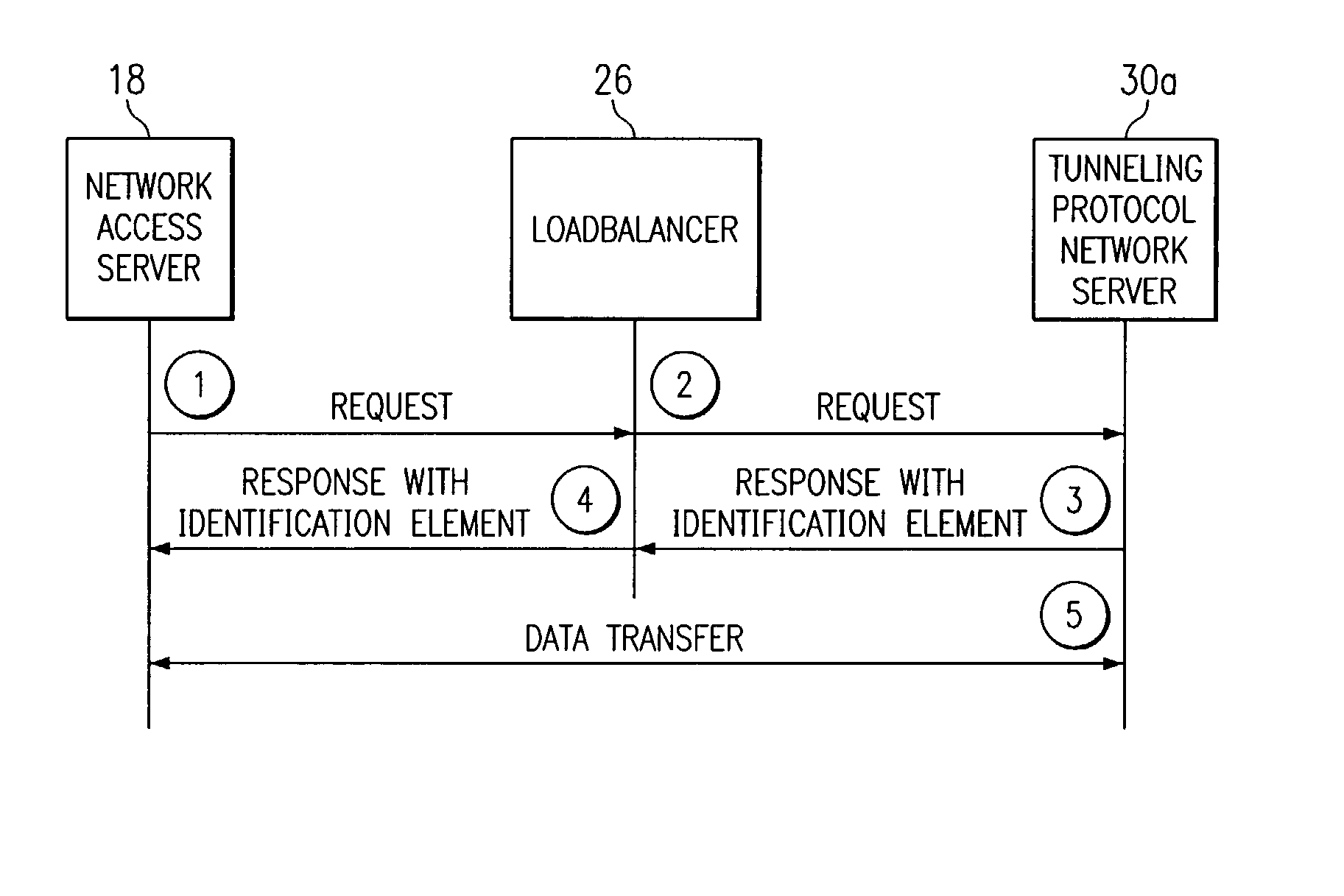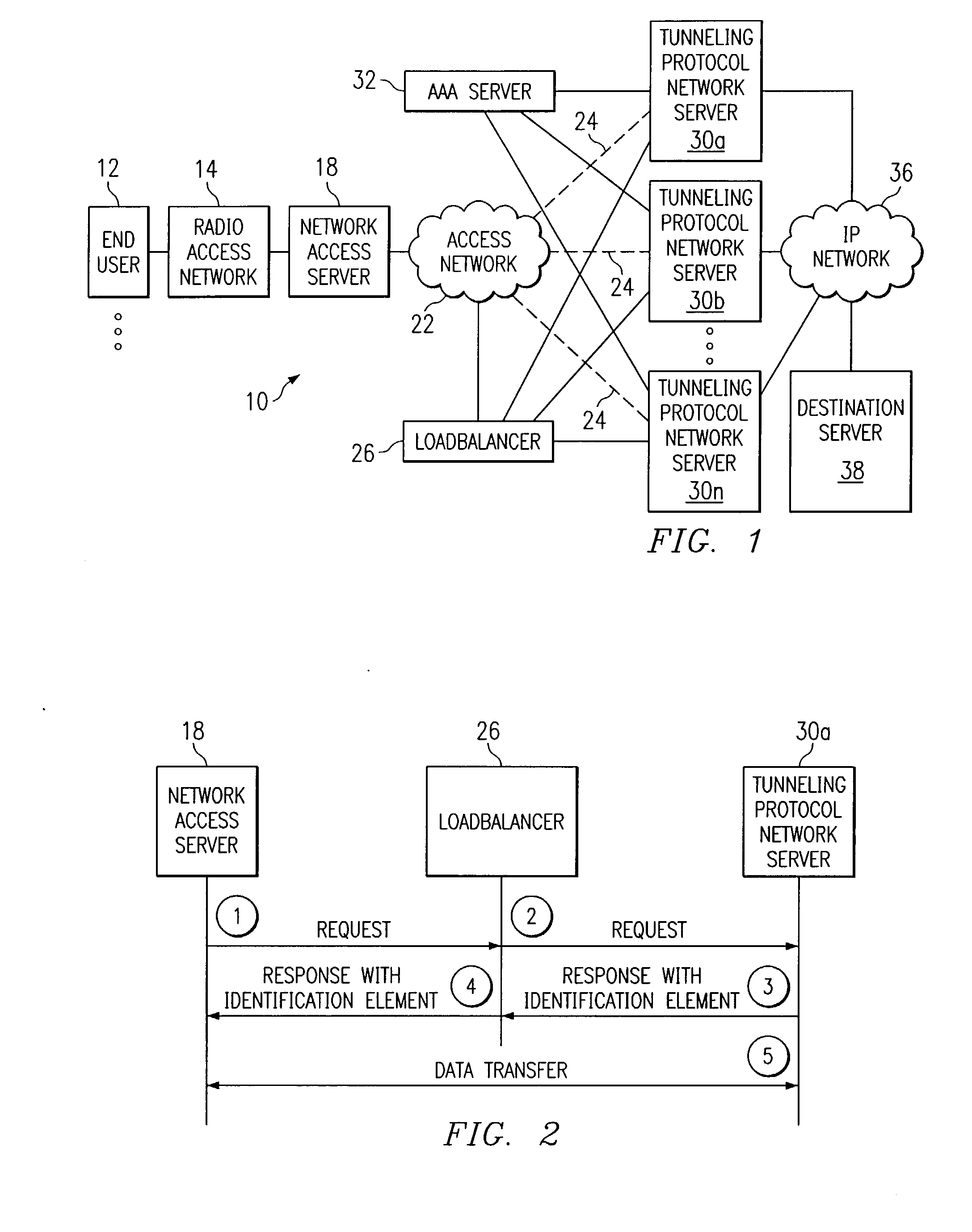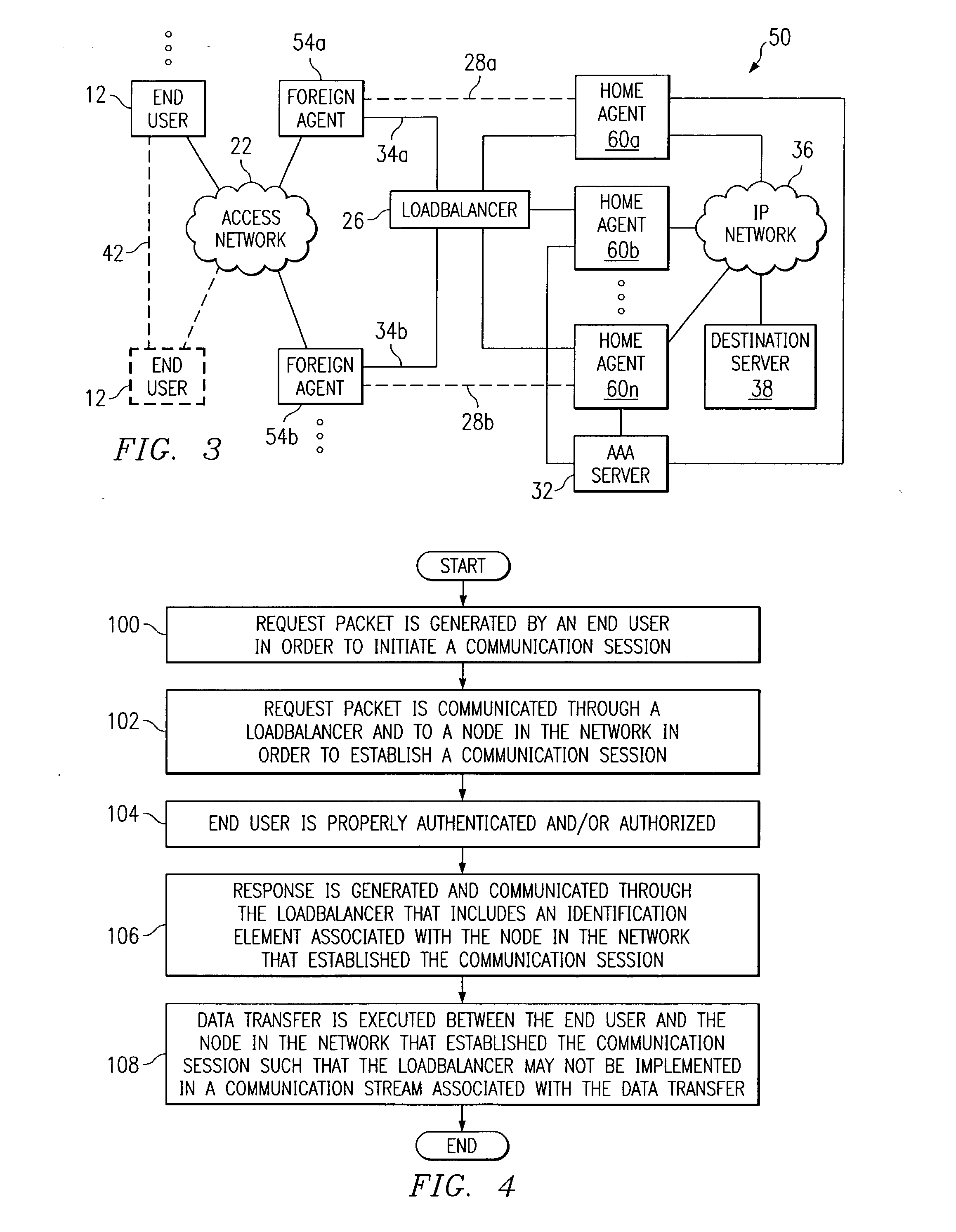System and method for communicating in a loadbalancing environment
a communication system and loadbalancing technology, applied in the field of communication, can solve the problems of reducing the number of central processing unit (cpu) cycles and requiring additional work, and achieve the effects of reducing the burden on the loadbalancing machine, eliminating or greatly reducing the disadvantages and problems associated, and facilitating the communication session
- Summary
- Abstract
- Description
- Claims
- Application Information
AI Technical Summary
Benefits of technology
Problems solved by technology
Method used
Image
Examples
Embodiment Construction
[0013]FIG. 1 is a simplified block diagram illustrating a communication system 10 for communicating data in a loadbalancing environment. Communication system 10 includes an end user 12, a radio access network (RAN) 14, a network access server (NAS) 18, and an access network 22. Additionally, communication system 10 includes a loadbalancer 26, multiple tunneling protocol network servers (TPNSs) 30a-n, an authentication, authorization, and accounting (AAA) server 32, an internet protocol (IP) network 36, and a destination server 38.
[0014] In accordance with the teachings of the present invention, communication system 10 operates to alleviate the responsibilities associated with loadbalancer 26 in providing optimal communications between end user 12 and IP network 36. Two stages generally exist in communications flows that involve end user 12. A first stage relates generally to initiation whereby a communication session may be prompted by end user 12. A second stage relates generally ...
PUM
 Login to View More
Login to View More Abstract
Description
Claims
Application Information
 Login to View More
Login to View More - R&D
- Intellectual Property
- Life Sciences
- Materials
- Tech Scout
- Unparalleled Data Quality
- Higher Quality Content
- 60% Fewer Hallucinations
Browse by: Latest US Patents, China's latest patents, Technical Efficacy Thesaurus, Application Domain, Technology Topic, Popular Technical Reports.
© 2025 PatSnap. All rights reserved.Legal|Privacy policy|Modern Slavery Act Transparency Statement|Sitemap|About US| Contact US: help@patsnap.com



